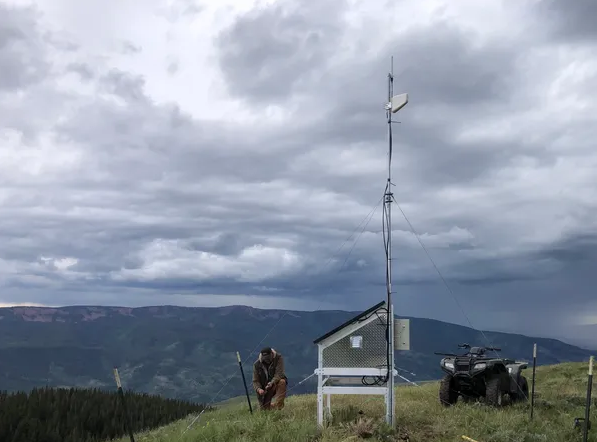EAGLE COUNTY, Colo. (KDVR) — Several ranchers in Eagle County are using new technology to herd and control cattle and sheep. The Eagle County Conservation District, along with the U.S. Forest Service and Bureau of Land Management, has started a three-year pilot program that uses new equipment to contain animals by creating a virtual fence.
Cattleman Pat Luark, who like many ranchers in western Colorado uses BLM land to graze cattle north of Eagle, likes what the technology offers.
“This way of thinking can change the future of the west,” Luark said.
The rancher started using the technology two years ago and was the first cattleman to sign up for the high-tech option that allows the land to rest.
Luark used virtual fencing to rest and regrow 600 acres which are now seeing new growth.
“This is working beyond our expectations,” said Luark. “The secret to water is to get it into the ground.”
How the virtual system works
The $1.5 million grant-funded project is using equipment from a company called Vence. The system uses 10 tower base stations to communicate with collared animals within a 12-mile radius.
Approximately 500,000 acres in Eagle County are virtually fenced off and about 2,000 cattle are now wearing collars, according to the agencies operating the program. The collar works like a wireless dog fence and delivers a mild shock to animals if they try to move outside the virtual boundary.
GPS tracking equipment monitors the location of where cows or sheep are grazing in pastures which helps protect the land and ecosystem. Ranchers can pick specific parcels of acreage to protect and move animals to maximize the land.
The cattle’s location is updated on a digital map, so ranchers know if their cattle enter a no-grazing zone.
Water benefits
Eventually, the system could work not only for ranchers and the animals but the landscape. Years of drought on the Western Slope have ranchers, conservationists and land management experts looking for solutions to protect grasslands from overgrazing.
“Our soil is our aquifer,” said Kristy Wallner, a range land specialist with BLM. “Increasing organic matter in soil by just 1% can increase by 10 times the soil’s ability to hold water.”
Wallner said grazing animals help disturb the soil. Since virtual fencing makes it easier to move animals, more hooves are kicking up urine and manure on the landscape’s native grasses which help prevent soil erosion and runoff.
“Hooves coming across land breaks material down and gets it into the ground,” explained Wallner. “Being able to rest a lot is a huge deal. Cows get patterned to go to the same spot.”
Wallner said producers in western Colorado need to consider grass their top priority.
“During drought or dry times, we got to work as a team to protect the landscape and care for the landscape,” said Wallner.
Producers lease the collars at about $50 per device. Ranchers told us the cost of collars is cheaper than maintaining fence lines in the rugged and challenging terrain of Eagle County.
Wallner shared several benefits of the technology including, no physical fence allows wildlife to move across the land more freely, protects sensitive areas like burn scars and riparian areas, plus hikers and bikers recreating on public land won’t leave gates open.
Program managers are looking for more ranchers to take part in the program. More information can be found on the Eagle County Conservation District website.


